

 PyroGen Aerosol Fire Suppression System was installed in the electronic
pods on the N42RF aircraft wing stations. The air sampling POD is used
during the New England Air Quality Study (NEAQS) project from 1 July
'04 to 15 August '04. NOAA used the WP-3D aircraft to determine how the
transport of atmospheric chemicals from one region or continent
influence the air quality and climate forcing in other regions and
continents. Due to the small size and extremely delicate instruments of
this experiment, pyrogen aerosol was an excellent choice for the fire
protection system . With out additional pressure flasks, CFC's or HFC's
to leak, it was the perfect agent for the experiment.
PyroGen Aerosol Fire Suppression System was installed in the electronic
pods on the N42RF aircraft wing stations. The air sampling POD is used
during the New England Air Quality Study (NEAQS) project from 1 July
'04 to 15 August '04. NOAA used the WP-3D aircraft to determine how the
transport of atmospheric chemicals from one region or continent
influence the air quality and climate forcing in other regions and
continents. Due to the small size and extremely delicate instruments of
this experiment, pyrogen aerosol was an excellent choice for the fire
protection system . With out additional pressure flasks, CFC's or HFC's
to leak, it was the perfect agent for the experiment.
Mag 02 seen in the sampling POD WP-3 Orion Aircraft with POD
RedBrooks
Laboratory up dates
RBL fire lab has acquired the Cargo
Compartment MPS Device. After numerous request from airlines
and OEM's RBL is now operating Cargo MPS test protocol using our Water Mister and Hypoxic air (reduced
oxygen).
We still have the condensed aerosol system but with the new terrorist
scenarios
on commercial airliners, we feel the only long term solution to the
entire
airliner fire threat is water mist. The MPS device ( construction shown
below) is based Federal Aviation Regulations (FAR. s) and Joint
Aviation
Regulations (JAR. s) require fire suppression systems for some
classifications
of cargo compartments.
Link
to the FAA T/C web site.
23 June 2003, FirePass receives Hypoxic Air US EPA SNAP Listing. Approval for FirePass-S extinguishing agent, used with in the IAI cargo suppression system. This was the last administrative hurdle toward approval of the cargo system. IAI and FirePass and the entire system cargo design team celebrate this critical accomplishment. EPA Letter copy here
RedBrooks Laboratory has never liked
HFC or CFC fire suppression systems
due to their limited capability and environmental ramifications. Post
combustion
byproducts from these gas systems, in some cases can be worse than the
fire itself. We feel water and Hypoxic
air is
a better systems approach and the only long term solution. Testing is
going
on now using Air
Liquide MEDAL permeable membranes and IAI's LPDF misters.
The modular system has the capability
to be expanded for use in wing tank inerting, passenger cabin water
mist,
hidden area and other fire suppression systems requirements. The unique
properties of the Hypoxic system will also provider mitigation for the
stale or contaminated atmospheres in the airliner cabin. The system can
remove bacteria, virus, odors and other nuisance products from the air
conditioning system.
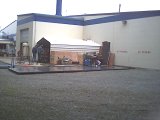
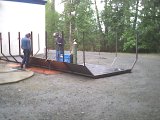
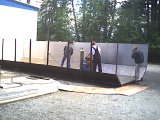
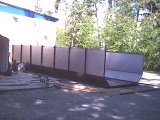
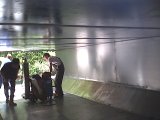
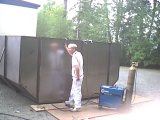
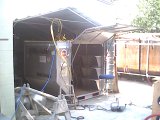
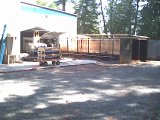
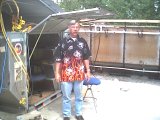
Other manufactures interested in using the Cargo MPS test device contact RBL for LAb time Book mark this page for future developments, and watch the test article grow.
Our Other Airliner Cargo Bay
suppression
system " FIREPAK" designed and manufactured with FAA Parts
Manufacturing
authority (PAM), pending design
approval
from the ACO, with Supplemental Type Certificates (STC's)
and
Installed by International Aero Inc.
FAA/J AA Repair Station IQNR108K
Cut
away of a MAG-3 (100g), Aerosol
fire fighting agent generator
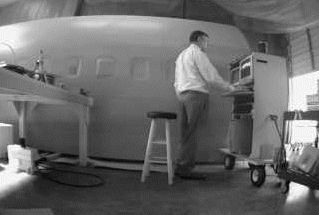
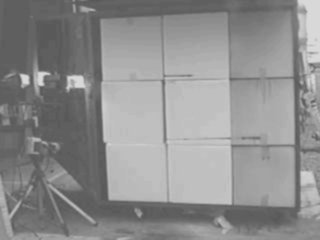
Test Fixture, 40' section of B
727
LD3 simulator configured for deep seated class A
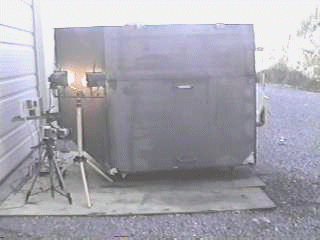
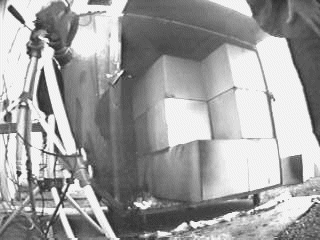
LD3 Container Simulator, under
test
Results of a deep seated Class A Fire test